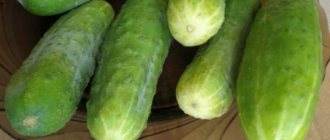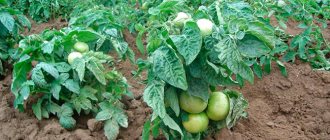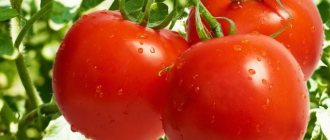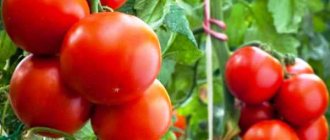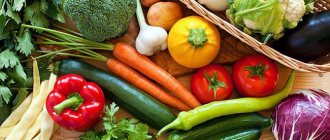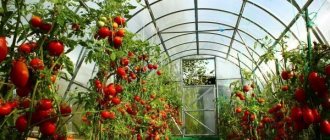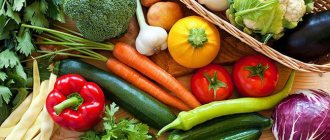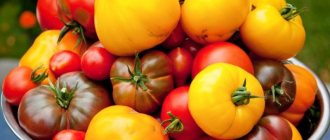Notice: Undefined variable: css_padding in /home/g/grigorig/prodachnika.com/public_html/wp-content/plugins/vote2x/vote.php on line 100 Notice: Undefined variable: css_opacity in /home/g/grigorig/prodachnika. com/public_html/wp-content/plugins/vote2x/vote.php on line 101 Notice: Undefined index: prodachnika_comvote2x8493 in /home/g/grigorig/prodachnika.com/public_html/wp-content/plugins/vote2x/vote.php on line 118 Notice: Undefined variable: css_bg in /home/g/grigorig/prodachnika.com/public_html/wp-content/plugins/experts-by-webnavoz-1.3/experts-by-webnavoz.php on line 314 Notice: Undefined variable : out in /home/g/grigorig/prodachnika.com/public_html/wp-content/plugins/experts-by-webnavoz-1.3/experts-by-webnavoz.php on line 314 Notice: Undefined variable: css_market in /home/ g/grigorig/prodachnika.com/public_html/wp-content/plugins/experts-by-webnavoz-1.3/experts-by-webnavoz.php on line 322 Peppers - vegetable or sweet - are loved by many high-yielding and healthy crops. Many summer residents prefer to grow peppers. But the yield is higher for those who grow peppers in a greenhouse. One of the important growth parameters is the correct choice of seeds.
Characteristics of varieties for greenhouses
When choosing from a variety of sweet pepper varieties in the store, you need to understand what characteristics a species should have that is suitable specifically for your growing conditions. First, let’s look at the benefits of vegetables grown in a greenhouse.
Interesting! Almost all varieties of peppers are suitable for cultivation in a greenhouse, but experts advise paying attention to tall species with a long fruiting period; they will best show their best qualities.
Pros and cons of greenhouse cultivation
First, let's talk about the advantages of growing peppers in closed beds:
- Unexpected weather changes will not affect the growth, fruiting, or taste of the crop;
- It is in the greenhouse that you can harvest the first harvest of vegetables;
- Pests and diseases that affect plants in open beds practically do not occur in closed beds;
- The most peppers per season can be collected from greenhouse bushes;
- Greenhouse plants stop bearing fruit relatively later than their outdoor counterparts.
Among the disadvantages of growing peppers indoors, only one thing can be said - it is a labor-intensive process: you need to set up a greenhouse, monitor the temperature, air humidity and lighting. But the resulting harvest easily compensates for all the shortcomings.
Choosing the right variety
There are some criteria that you need to pay attention to when choosing a pepper variety:
- The description of the species must indicate that they are intended for greenhouse cultivation. Such vegetables tolerate high temperatures better during the daytime.
- Plant height. They can be tall, medium or short. The choice will depend on the size of the greenhouse. For a small greenhouse, you should not buy a high-quality crop.
- Disease resistance. Various fungi, infections and pests grow well in greenhouse conditions. It is good if the variety is already immune to these problems in advance.
- Harvest ripening period. Peppers are early-ripening, mid-ripening and late-ripening. Successful gardeners advise choosing different types for a longer harvest period.
Which is better, variety or hybrid?
Selectively bred hybrids are much more resistant to diseases, pests and bad weather conditions. Ultra-early ripening, the largest and champions in fruiting - this is also about them. But the seeds of such plants do not have maternal memory and seeding material will have to be purchased every year.
The seeds of the varietal peppers you like can be collected and seedlings planted for the next season.
We focus on the region of residence
Rarely do summer residents pay attention to zoning. But it is better to buy varieties intended for your region, so you can avoid many of the problems associated with the cultivation of peppers. Such vegetables grow better, are practically not susceptible to disease, are adapted to weather conditions and bear fruit well.
Choice by shape, color and size
Over a long period, breeders have developed many species that differ in color, size and shape. They are cuboid, cone-shaped, spherical, long and short, with a pointed and blunt nose, green, yellow, red, orange and even almost black. Here everyone is free to choose according to their taste.
But you should pay attention to the thickness of the fruit wall, the density of the pulp, shelf life and in what form it is best to consume them.
Seed selection
It is also important when purchasing pepper seeds to pay attention to the packaging; it should contain the following information:
- variety name;
- batch number, number of seeds, packaging and expiration dates;
- name of the organization, its telephone number and address;
- agrotechnical growing conditions.
Attention! Buy seeds only in trusted, specialized stores.
Variety or hybrid - which is better and why
The difference between a varietal crop and a hybrid is in its selective characteristics. Varietal seeds retain their parental characteristics. The taste and aroma of varietal vegetables is higher. A hybrid is obtained by crossing different parental varieties. This is done for various reasons: to extend shelf life, transportability, impart disease resistance, and increase yield.
Hybrids are easier to grow, but their flavor is not as intense. In addition, hybrid seeds are not suitable for subsequent cultivation, unlike varietal ones. To make the choice easier for the gardener, I will provide a table with the advantages of varietal and hybrid species.
| Varietal species | Hybrid species |
| Have a pronounced taste and aroma | They have high productivity and transportability |
| Higher nutrient content | Higher resistance to diseases |
| Able to adapt to weather changes | Demanding on agrotechnical conditions, difficult to adapt to unsuitable soil |
| Used for breeding | They do not give seeds for propagation |
It is impossible to unequivocally answer the question of what to choose – a hybrid or a variety. What is best for one gardener may not be suitable for another. It is necessary to determine the purpose of planting: if you need to harvest a lot of crops, then you should choose hybrid seeds. In the case when vegetables are not planted for sale, it is better to choose varietal species that can be cultivated in subsequent years.
Rating of peppers by characteristics
When choosing peppers, most summer residents are guided by certain characteristics.
The highest yielding varieties
To harvest large harvests of peppers in your greenhouse, experienced gardeners recommend the following varieties:
- Fiesta F1. This medium-sized hybrid has a yield of 15-20 kg per square. The fruits are prism-shaped, weigh about 150 g and are orange in color. The taste is sweet, with a pleasant peppery aroma.
- Livadia F1. A new species with large (up to 500 g), dark red peppers, the wall thickness of which can reach 1 cm. From 1 sq. m you can collect 13-15 kg of such vegetables. The variety has good immunity to tobacco mosaic and fusarium.
- Ruza F1. From 1 sq. m of such peppers harvest about 25 kg . The hybrid is ultra-early ripening with small, cone-shaped, bright orange fruits. Peppers have a sweet and sour taste and are excellent for preservation. Resistant to sudden changes in weather and many rots.
- Latino. 4-5 kg are collected from one bush . The fruits are large, red, cube-shaped. The plant is tall and requires staking. The harvest begins 110 days after germination.
- Barguzin. The bush of this species is small, only 50-55 cm, but many red fruits weighing from 200 grams ripen on it. Fruiting lasts up to 3 months.
Large-fruited peppers
To be able to show off large, juicy pepper fruits to friends and neighbors, the following varieties are recommended:
- Pepper Bourgeois F1. The species is mid-season, the fruits are large (up to 300 g), cube-shaped, yellow. The species is very tall, reaching 3 meters in heated greenhouses. One plant can simultaneously contain 40 peppers with a bright taste and smell.
- Grenadier F1. The fruit weight of this mid-season hybrid is 650-700 g. The bushes are tall and powerful. The peppers are cone-shaped with a truncated nose and dark red. It has a stable harvest.
- Gemini F1. An early-ripening hybrid with large (400 g), golden, cone-shaped fruits. Ripening occurs after 75-80 days. The variety bears fruit consistently, even under unfavorable conditions. Has immunity to various diseases.
Attention! Large-fruited varieties of sweet peppers require proper care and timely feeding, only then can you get weighty fruits.
Popular hybrids
Those who prefer hybrids to varieties are advised to take a closer look at the following species:
- Pepper Cardinal F1. Peppers can be harvested already 80 days after germination. The plant is quite tall (up to 1 m) with large, cube-shaped chocolate-colored fruits. 18-20 kg of vegetables are collected from one square.
- Alyonushka F1. Russian mid-season hybrid . The branches of the bush are powerful, about 1.5 m high. The peppers are prism-shaped, medium-sized, bright scarlet in color. The species is resistant to tobacco mosaic. Peppers are used both fresh and in cooking.
- Asti Yellow F1. Medium-sized hybrid with numerous golden cube-shaped peppers. Every year the plant pleases summer residents with a consistently good harvest. Fruits weighing 200 g have excellent taste.
Tall varieties
Those gardeners who have tall greenhouses can purchase the following varieties of tall peppers:
- Miracle tree F1. Early ripening hydride resembles a tree from the outside. Its height can be 2 m. The fruits are small, prism-shaped, and have a pleasant taste and peppery aroma. The variety is unpretentious and immune to many diseases.
- Cockatoo F1. A tall, early-ripening hybrid species has bizarre long (25-28 cm) fruits in the shape of a parrot's beak. Peppers weighing 500 grams are red in color and have a sweet taste. The pulp is not juicy, dense. Up to 6 kg of vegetables are harvested from the plant.
- Orange miracle. Bushes of this variety need to be tied to a support; they are tall, powerful and spreading. The fruits are cube-shaped, orange, sweet. Ripening begins after four months.
Attention! All tall types of sweet peppers need to be tied to a support. And in order for them to produce a good harvest, they are pinched at a level of 120-150 cm.
New varieties of peppers
For those who like to experiment and try to grow new varieties, it is recommended to plant the following peppers:
- Gladiator. Large-fruited, mid-season type of pepper. The bush is small, only about 50 cm. The fruits are yellow, trapezoidal in shape, weighing 300 g. The pulp is juicy, crispy, aromatic.
- Big Daddy. An early ripening species with cherry, cone-shaped, tasty fruits. The bushes are compact and small. The plant is unpretentious and is not afraid of diseases. Used for commercial cultivation.
- Patricia. Large-fruited, mid-early type of pepper. It has long and yellow fruits. Bush height 120 cm.
Features when growing
Tall pepper varieties are much more difficult to grow than low-growing varieties. And this depends, first of all, on more complex care. At the same time, the peppers must be shaped and tied. Also, it is worth considering that such peppers are usually grown in greenhouse conditions. Although in the southern regions they are also grown outdoors. Further in the article, the most important points when growing tall peppers will be discussed. Let's go?
Choosing a Pepper Variety
. This point is of utmost importance. Here We must understand for what purposes, how and where the cultivation will take place. For example, tall varieties and hybrids in open ground can only be grown in the south of the country. In the central zone and more northern regions, such peppers are grown exclusively in greenhouses.
Seed preparation
. Seeds from the store are most often ready for use. Here, to speed up the process, you can simply soak them in solutions of growth stimulants. Or in a damp cloth made of plain water, which also speeds up the process. And if you want to learn about seed preparation in more detail, then you need to read this article.
Growing through seedlings
. Usually in the Russian Federation, peppers are grown through seedlings, and all because they are heat-loving plants. They are also distinguished by a long ripening period, during which they simply do not have time to ripen in open ground.
Pepper seedlings must be of a certain age before planting. For example, for early varieties it should be 55 - 65 days, 65 - 70 days is the age of seedlings for mid-season varieties, but late varieties should be 70 - 80 days old.
Important
! Before planting seedlings in a permanent place in the garden, they must be hardened off. And here it is important that the process takes place gradually.
Seedlings are planted in spring only in warm soil. At the same time, there should be no threat of return frosts (see forecasts). All about growing peppers.
Caring for tall peppers in the garden
Varieties of tall peppers in the garden require more attention, unlike low-growing varieties. And this is explained by the fact that they need to be formed and tied to supports. It is this moment that causes difficulties for beginning farmers who do not know how to properly shape peppers. When forming, most often 2 stems are left, in rare cases three.
Regular watering
.
After planting seedlings in the garden, the first ten days need to be watered daily. Subsequently, twice a week is enough for the normal development of plants. Advice
! Watering as it dries out is a good idea.
And also, to preserve moisture and looseness of the soil, the soil around the bushes is sprinkled with mulch, which contributes to this. Also, weeds do not grow under mulch.
How to feed peppers
. Varieties and hybrids of tall peppers have a long growing season (like all peppers). And during the season, powerful and tall plants require a lot of nutrients. We feed the plants once every two weeks. To do this, we use both organic and mineral fertilizers. It is best to alternate them with each other. And also, any complex fertilizers will be good. Feeding any peppers in more detail.
Prevention from diseases
. As everyone knows, it is easier to prevent any disease in peppers than to treat it later. Therefore, actions such as maintaining crop rotation, preparing seeds and soil, and also treating crops with biofungicides are fundamental. You can learn everything about biofungicides from this article.
According to ripening time
In order to be able to enjoy delicious, fresh peppers from your garden throughout the summer season, you should plant varieties with different ripening periods.
Ultra-early ripening
The very first fruits can be collected from these ultra-early varieties of sweet peppers:
- Tamara F1. The growing season of this ultra-early hybrid lasts only 65 days. The bushes are small and compact. The fruits are medium, juicy and tasty. The species tolerates minor cold snaps well.
- Sonata F1. The fruits of this high-yielding hybrid can be harvested after 70 days. Peppers weigh on average 200 grams. The variety is unpretentious and resistant to diseases.
- Caliph F1. Already 55-60 days after germination, you can enjoy the delicious fruits of this variety. Peppers are initially white in color, but as they ripen they turn red. Although the species is quite cold-resistant, it is still best to grow it in greenhouses.
Early
By the end of June, the fruits of these early varieties of bell pepper begin to ripen:
- Triton. The species has small bushes and therefore does not require staking or pruning. The fruits are medium, weighing 150 g, red.
- Merchant. The growth of the plant reaches 85-90 cm and for this reason it requires a garter to a support. This variety is loved not only for its early ripening, but also because of the stable, large harvest of red peppers.
- Montero. The harvest of this hybrid will take a little more than 3 months . The fruits are medium, weighing 120-130 g. From one bush you can collect 2 kg of peppers.
Medium ripening
From the beginning of the second half of summer, we begin to harvest from mid-season varieties; their growing season lasts about 110-130 days:
- Pepper Anastasia. The height of the plant is 75-80 cm, the yield is small - 4-5 kg per square. The fruits are tasty, juicy, weighing 230-250 g.
- Fatty. Thick-walled (1cm) fruits weighing 200 grams are red in biological ripeness. Pepper is valued for its high content of vitamin C. The plant is not tall - 55-60 cm. Productivity is up to 5 kg per square.
- Isabel. A productive hybrid with large and thick-walled fruits. The bush is compact, 60 cm in height. The weight of pepper is 130-150 g; from one bush you can collect 5 kg per season.
Late
Such varieties begin to bear fruit after 130 days, towards the very end of summer. Of the late-ripening peppers, it is worth noting:
- Hercules. The fruit harvest period is 135-150 days from germination. Peppers weigh 150-180 grams and are red when fully ripe.
- Marshmallow. Such a plant should only be grown in greenhouses where the temperature does not drop to zero. Vegetables fully ripen by the beginning of autumn and are red in color and weigh 150-180 grams. The pulp is tasty and crispy. The bushes do not require a garter.
- Bogatyr. Tall and spreading bushes of this species need support. The growing season of the plant is about 4 months, the peppers weigh 200 grams and are scarlet in color.
If you plant it too, you’ll get it earlier
Leaders of the group of early tall peppers:
1. “Miracle tree F1”. A very tall plant looks like a small tree, reaching 200 cm. The early hybrid has the unique ability to bear fruit well, despite the lack of light, and to resist viral infections. The excellent juicy taste of bright red prism-shaped fruits with thin skin ensures their culinary use as homemade preparations and serving “from garden to table.”
Pepper "Health"
2. “Health.” The variety, growing up to 170 cm, successfully overcomes a slight lack of light and produces light green fruits at technical ripeness in less than 3 months from germination. When fully ripe, a small fruit with an uneven surface turns red, and its taste is rated “excellent” by experts.
3. "Terek F1". The hybrid, almost 2 m tall, tends to begin bearing fruit early and produce an even harvest. And the yellow narrow cones, which turn red only at a late stage of maturity, resemble “icicles” on a Christmas tree. It shows itself successfully in salads, during heat treatment and as a salt in preparations for the winter.
Advice! Most varieties of tall peppers require shaping. The mandatory nature of this process is usually indicated on the seed package.
Pepper "Kakadu F1"
By growing region
When choosing suitable pepper seeds, an important role is played by information in which regions it is recommended to grow this vegetable.
The best varieties for greenhouses near Moscow
Such plants easily tolerate lack of light and high air humidity:
- Pepper Accord. early ripening species with tall and powerful bushes. Quite unpretentious with increased immunity to various diseases. The vegetables are large, cone-shaped with a truncated nose, dark red at the end of ripening.
- Arsenal. The large fruits of this variety turn red by early August. Peppers can be stored fresh for a long time. The species does not require special care.
- Pinocchio . Vegetables can be harvested 3 months after germination. Peppercorns are long (18-20cm), cone-shaped, dark burgundy in color.
- Orange King. An unpretentious early species with abundant fruiting. The vegetables are large, dark orange, and can be harvested after 80 days.
- Cabin boy. Nice, unpretentious and high-yielding species. Its peppers have a variety of colors and stick out in different directions. With a bush height of 60 cm, it requires a garter.
Sweet peppers for the middle zone
This region is one of the most favorable for growing bell peppers. In addition to all the above varieties, the following grow well in this area:
- Pepper Bandai F1. It has cube-shaped fruits weighing 400-450 grams of red color. Productivity – 14 kg per square. Good resistance to viral diseases.
- Snowball F1. Even at low seasonal temperatures it produces an excellent harvest. The peppers are light, almost white , cone-shaped, weighing 150 g. The species belongs to the ultra-early hybrids.
- Father. Red fruits in the form of cubes weigh 150-180 grams. The variety is low-growing, early. The species is immune to tobacco mosaic.
Pepper varieties for greenhouses in the Urals
This region has short summers, spring comes late, and frosts begin as early as late September. Suitable for greenhouses of Ural summer residents:
- Amber. An early ripening variety with orange cone-shaped fruits. The plant is tall (90 cm) and requires support. A type of pepper with high yield.
- Kolobok. The bushes are very compact, their height is only 40 cm. The peppers are spherical, red, weighing 160 g. Vegetables ripen in 3-3.5 months.
- Knight F1. Mid-early hybrid, disease resistant. On a low bush grow peppers of amazing unusual shape - in the form of a turban, weighing 180-200 grams. The fruits are transportable, used fresh and for preservation.
Comparison table for greenhouse pepper varieties
| Peculiarities | Variety | Weight, g | Maturation period, days |
| Productive | Gourmet | 200 | 130 |
| Djemenyi f1 | 300 | 75 | |
| Agapovsky | 120 | 120 | |
| Atlant | 190 | 120 | |
| Apricot favorite | 300 | 100–115 | |
| Belladonna f1 | 200 | 110 | |
| Tall | Orange miracle | 300 | 100 |
| Claudio f1 | 270 | 70–75 | |
| California miracle | 130 | 100–120 | |
| Isabella f1 | 160 | 115–125 | |
| Early | Pride of Russia | 130 | 100–105 |
| Cardinal f1 | 280 | 80–90 | |
| Indalo f1 | 280 | 110–115 | |
| Bagration | 200 | 100–105 | |
| For the middle band | Bandai | 400 | 110–120 |
| Father | 150 | 85–95 | |
| Tenderness | 100 | 110–120 | |
| Gladki Kambi | 150 | 100 | |
| Snowball | 150 | 95–105 | |
| For Siberia | Triton | 200 | 76 |
| Firstborn of Siberia | 75 | 125–130 | |
| Novosibirsk | 120 | 100 | |
| Gardeners of the Moscow region | Pinocchio f1 | 120 | 90 |
| Winnie the Pooh | 60–70 | 110 | |
| Mercury | 110–120 | 90–100 | |
| For the Urals | Amber | 150 | 115 |
| Kolobok | 140 | 100–110 | |
| Vityaz f1 | 200 | 110–118 |
Favorite Dutch varieties
For those summer residents who prefer varieties from Holland, we can offer:
- Eroshka. This plant is distinguished by large, orange fruits on a low bush. It is distinguished by its early ripening and resistance to cold weather.
- Funtik. Early ripening variety. The bushes are tall and require support. The fruits are large, red, in the form of a truncated cone. The plant requires prevention from spider mites.
- Corvette. The low-growing bush is strewn with fleshy, fragrant, orange fruits. The peppers are small, weighing up to 90 grams. Early ripening variety.
Advantages and disadvantages of greenhouse pepper cultivation
In most regions of the country, the crop is grown in shelters. Yield indicators directly depend on the presence of heat, good lighting, regular watering and fertilizing. In open ground conditions in risky farming areas, it is impossible to provide plants with comfortable conditions. Greenhouses and hotbeds, tunnels and arcs with film or fabric covering help out. Peppers with a long harvest period, bearing fruit until autumn, grow especially well in such conditions.
The advantages of growing in greenhouses:
- high collection rates;
- early harvest, which is especially important for areas with a short summer period;
- plants are protected from weather disasters;
- the ability to grow crops even in regions with harsh climates.
But in order to get an excellent harvest and surprise relatives and neighbors, you need to follow basic agricultural techniques and provide the crop with optimal conditions for growth and fruiting in shelters. The main “disadvantage” of greenhouse cultivation is the labor intensity of the work, the need to control humidity levels and temperature indicators. But all the efforts pay off with high yields; the main thing is to choose the right varieties for cultivation in shelters.
Peppers with the most beautiful fruits
But if not only the taste of the fruit is important to you, but also its appearance, then the following varieties are for you:
- Orange miracle F1. The large, glossy, cube-shaped, orange fruits of this plant look like toys. In addition, the species is high-yielding and early ripening.
- Chocolate F1. chocolate -colored plump fruits , then choose this plant. The variety has excellent immunity, taste and aroma.
- Hidalgo F1. If you like the color yellow, then this is the plant for you. Large, fleshy fruits have a sweet taste. Peppers ripen within 120 days.
How to get a good harvest:
- buy only high-quality seeds from trusted manufacturers;
- Seed material must be treated to prevent it from being affected by various diseases. You can also soak them in a growth stimulator so that shoots appear a few days earlier;
- Sowing should be done no earlier than March. By the time of planting in the ground, seedlings should be 60-65 days old;
- seedlings should grow in a nutritious, light, well-moistened environment;
- peppers grow healthy only at temperatures not lower than 22 degrees Celsius;
- feed the seedlings on time;
- By the time of planting in the garden, the bushes should have at least 5-6 leaves. Do not allow the seedlings to overgrow when the first flowers appear on them;
- Follow the planting rules, leave at least 40 centimeters between the bushes. Fungal diseases often develop in dense plantings;
- be sure to shoot and shape the plants, otherwise a jungle will grow in the greenhouse;
- Water the peppers on time and correctly. Avoid excessive moisture in the soil and air;
- ventilate the greenhouse;
- loosen the soil regularly. Sweaty soil does not allow water or oxygen to pass through. In such conditions, the roots quickly die;
- when the bush grows to a height of 100-120 centimeters, pinch the top, this way you will direct all the forces of the plant to the formation of fruits;
- nourish the plants, so they will reward you with an abundance of large fruits.
The thickest peppers
For those who like to crunch sweet peppers, we can recommend:
- Gemini F1. This hybrid will appeal to those with a sweet tooth. In addition, this species is quite productive, has large fruits weighing up to 200 grams and is unpretentious in care.
- Vasya-Cornflower F1. This sweet, thick-walled vegetable will delight you with a good and early harvest, large fruits, and versatility in use.
- Claudio F1. The hybrid will easily tolerate low temperatures and will not become infected with viruses. The fruits themselves are large, weighing up to 300 grams, sweet with thick walls.
Resistant varieties of large, thick-walled peppers for open ground
Large varieties of sweet peppers with a thick crust are not particularly hardy, but there are many varieties that actively develop and bear fruit in open ground. The most common resistant varieties are presented in the table below.
| Variety | Wall thickness (mm) | Plant height (cm) | Fruit shape | Fruit weight (g) and yield (kg/m2) | Color in technical and biological ripeness Number of days from germination to technical maintenance. ripeness |
| Asti | 6-8 | 50-70 | cuboid | 180- 220 10 | red 110-120 |
| Anastasia | 6-8 | 60-80 | cone-shaped with weakly defined edges | 200-250 2,5-4,8 | dark cherry 120-130 |
| Belozerka | 6-7 | 40-70 | cone-shaped | 75-90 up to 8 | pale yellow, red 110-115 |
| Big mom | 7-8 | 50-70 | cuboid | 150-200 7 | green, bright orange 95-115 |
| Big Daddy | 7-8 | up to 30 | cone-shaped | up to 100 7 | green, purple 105-110 |
| ox ear | 6-8 | 70 | cone-shaped, corrugated | 120-150 2,5-3,2 | dark green, deep red 112-130 |
| United F1 | 6-8 | 55-65 | cuboid | 180-200 3-5 | red 120-125 |
| Golden Jubilee | 8,5-10 | 30 | rounded-flattened | 110-180 3,5-4 | dark green, then bright yellow 115-120 |
| Cardinal F1 | up to 8 | 60-100 | cuboid | 250-280 8-14 | red, purple 80-90 |
| Kolobok | 6-10 | 25-40 | spherical | 100-170 3-5 | light green, dark red 130-140 |
| Red giant F1 | 6-10 | 100-120 | cuboid and prism-shaped | 200-300 7-8 | red-raspberry 130-140 |
| Mercedes | 7-9 | 60-65 | cone-shaped | 180-200 3,5 | red 105-115 |
| Novogoshary | 8-9 | 45-60 | round, slightly flattened | 100-150 4 | green, red 110-120 |
| Orange miracle F1 | 5-7 | 80-100 | cuboid | 200- 250 8-14 | bright orange 95-100 |
| Fat Baron | 7-10 | 100-120 | cone-cylindrical | 250-300 6-7 | deep red 90-100 |
| Fatty | 7-10 | 50-55 | prism-shaped | 60-130 4-4,5 | green, red 115-118 |
Fatty is a mid-season unpretentious variety. This is not a hybrid. Its seeds can be collected and planted next season, resulting in excellent bush productivity.
Fatty
Fat Baron is distinguished by its weighty, sugary fruits of an original shape.
Fat Baron
Orange miracle F1 is a hybrid resistant to viral diseases that is attractive in appearance and pleases with excellent yield.
Orange miracle F1
Ozharovsky is a mid-early pepper of Polish selection. It is able to set fruit in low light and temperature conditions.
Ozharovsky
Due to the compactness of the bushes, the Novogoshary variety is easy to grow, and thanks to the rounded-flattened shape of the peppers, it is ideal for canning them as a whole.
Novogoshary
Mercedes bears fruit abundantly. A standard plant produces about 15-20 weighty peppercorns of universal culinary use.
Mercedes
Red giant F1 is one of the most resistant peppers. The powerful bush can withstand temperature tests and drought without any problems.
Red giant F1
The round fruits of Kolobok are simply intended for pickling as a whole. The plants are very compact.
Kolobok
Small Golden Jubilee bushes are practically not afraid of spring frosts. The walls of the fruit are very fleshy.
Golden Jubilee
Uniform F1 produces a stable harvest even in not very comfortable weather conditions. It has a refined peppery aroma.
United F1
Ox's ear is a proven variety for universal food use over the years. It is resistant to many diseases, especially verticillium and phytoplasmosis.
ox ear
The low-growing Big Daddy variety with unique purple fruits adapts well to local climatic conditions.
ox ear
The advantages of the Big Mama variety are excellent nutritional qualities, appetizing orange color and early ripening.
Big mom
Belozerka is a popular mid-early pepper, which, in addition to many advantages, bears fruit and is stored impeccably.
Belozerka
Anastasia's cherry-colored fruits have a unique fruity taste and a very aromatic smell of the pulp.
Anastasia
Asti is a very sweet, beautiful and high-yielding variety.
Asti
Hot peppers for growing in a greenhouse
The range of hot peppers for growing indoors is very diverse. Let's talk about the most favorite varieties of summer residents:
- Anniversary VNIISSOK. The bushes are tall 100-130 cm; they need to be tied to a support. The fruits are long, trunk-shaped, with a slightly pungent taste. With proper agricultural technology, you can harvest up to 2 kg of vegetables from one plant.
- Double abundance. The plant is spreading, 60-70 cm high. Peppercorns are long (18-20 cm) , red, slightly sharp. The variety is unpretentious and high-yielding.
- A burning bouquet. When planted as seedlings in February, peppers can be harvested from August. The bush is tall, the fruits are red, long, and have a pungent taste .
Hot and sweet peppers under one cover
Sweet and hot peppers belong to the nightshade family, which means that plants can cross-pollinate as they grow. After such crossing, sweet vegetables may begin to taste bitter.
To play it safe, experienced gardeners advise not to plant these species in the same room .
Diseases and pests of sweet pepper
Vegetable crops, like all other garden plants, can be susceptible to attack by harmful insects or many diseases common in the climatic region where sweet peppers grow. Pests, the same as those of tomatoes, are cutworms, whiteflies, and the most common disease is dry blossom end rot or fusarium.
Pepper diseases and pests
The first disease is more dangerous, since small spots first appear on the peppercorn, which then smoothly turn into large islands that affect the entire fruit. The sweet pepper gradually dries out, leaving only a thin crust.
Sweet pepper diseases and ways to combat them
To prevent this from happening, you must follow simple rules of care:
Weeding beds
Reviews from gardeners about popular varieties
At the moment, in the State Register there is a large assortment of good varieties of peppers for greenhouses. Every summer resident can find exactly those species that will delight him with their rich harvests.
Tatiana, Tula:
I have been growing my favorite varieties in my greenhouse for a long time: California Miracle, Atlant, Lastochka. I have never been left without a harvest. I start picking peppers by the end of June.
Natalya, Novgorod:
Last year I planted Apricot favorite for the first time. From six bushes I provided my entire large family with peppers for a whole year. This year I have already purchased seeds of this variety.
Nikolay, Kemerovo:
My favorite varieties for the greenhouse have remained the same for many years. These are Barguzin, Bogatyr, Atlas, Cardinal. I trust these guys, and they have never let me down with the harvest.
Variety Orange miracle
Ultra early ripening. It is removed already on the 90th day. The color of the fruit at maturity is a technical dazzling lemon color, later acquiring a rich orange color. It weighs more than average - up to 150 g. The shrub is 120 cm high. The pulp is not very soft, dense.
- Ultra early ripening variety. The fruits ripen at 70-72 days.
- The bushes reach a height of 95-100 cm.
- The fruits are distinguished by their cube shape and 10-11 cm in diameter.
- The walls of the fruit are 9-10 mm thick.
- When fully ripe, the pepper turns orange.
- Ripe fruits weigh 180-250 g.
- Plants of the Vegetable Miracle variety have genetic resistance against diseases such as tobacco mosaic virus and late blight.
- From 1 m2 you can get 7-12 kg. high quality fruits of this variety.
- In the fall, work needs to be done to prepare the soil for spring planting:
- After harvesting the predecessor, the soil surface is weeded to completely clean the area from plant weeds and residues of already harvested vegetable crops.
- Weeding is repeated at least three times. The weeding depth should be no more than 2-3 cm.
- At the beginning of September, the soil is dug up or plowed using small-scale mechanization (walk-behind tractor, mini tractor with plow). The variety has the ability to form a powerful root system, so plowing should be done to a depth of 19-22 cm.
- If the plowing was carried out efficiently without the formation of lumps, then after 2 weeks you can try to level the plowed area using a rake. If leveling the soil does not work, then you need to wait for precipitation or postpone this activity until spring.
- Due to its short growing period, seedlings of the Vegetable Miracle variety can be planted in a greenhouse even in early June. The optimal planting pattern for this variety is 25 x 35 cm.
- The variety produces good yields on sandy loam soils and chernozems, where early cucumbers and carrots previously grew.
- During the first 2-3 weeks, the planted seedlings grow slowly and can be suppressed by weeds. Therefore, weeding should be carried out immediately after weeds emerge on the soil surface.
- Bushes need timely staking and shaping. Plants should be tied when the height of the plants reaches 30-35 cm. It is best to use hemp twine, which will be attached to the top metal trellis or part of the supporting structure of the greenhouse.
- The variety is very demanding on irrigation. Cultivated plants need to be watered every 4-5 days. Watering should be done in the morning so that excess moisture evaporates and does not condense on the leaves of sweet peppers during the night.
- When using low-quality seedlings, you can get massive damage to this variety by diseases such as blackleg and fusarium. Blackleg is a fungal disease that develops on seedlings and can later appear on mature plants. The source of infection is the seeds. On plants affected by blackleg, the lower part of the stem darkens. Subsequently, it rots and dries out. Measures to combat this disease are as follows:
- The soil used for growing seedlings must be treated with a 1% solution of potassium permanganate.
- Systematic inspection of seedlings in order to timely detect affected plants.
- In the room, maintain an optimal level of relative air humidity (55-60%). Fusarium blight on sweet pepper plants is caused by a fungus (genus Fusarium). This fungus causes blockage of plant blood vessels, which leads to nutritional disturbances. After this, the leaves curl and turn yellow. After 15-20 days, sweet pepper plants affected by fusarium completely die. Plants infected with Fusarium cannot be treated, so preventive measures to combat this disease come to the fore:
- Before planting in the ground, seeds are treated with Fundazol. The rate of use of the drug is 2 g of the drug per 10-12 g of seeds.
- As a preventive measure, vegetative sweet pepper plants are sprayed with Topsin-M and Fundazol.
